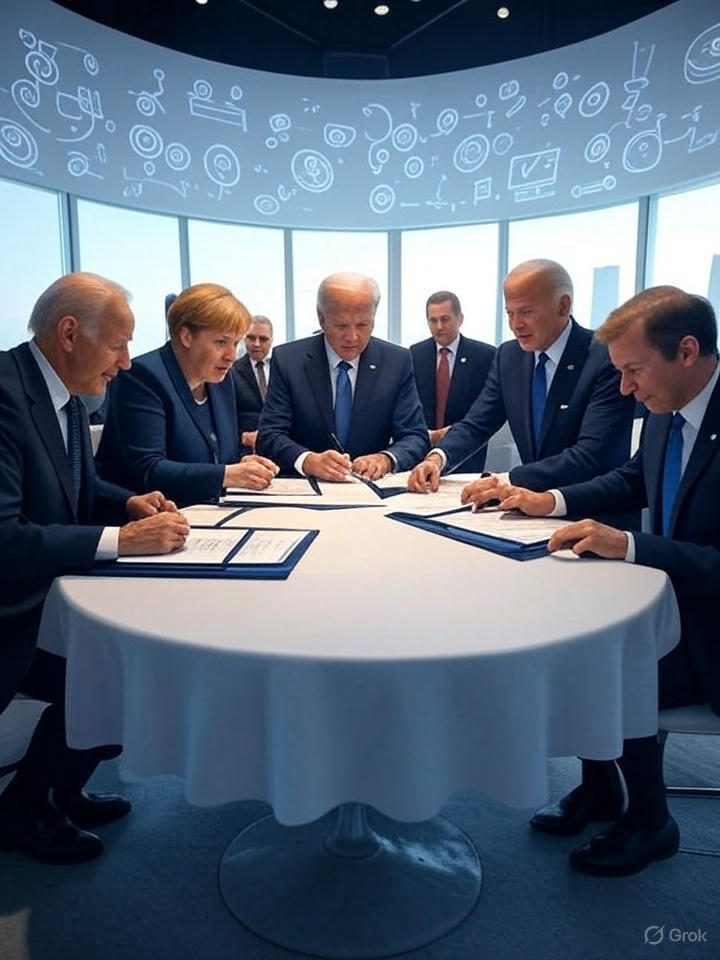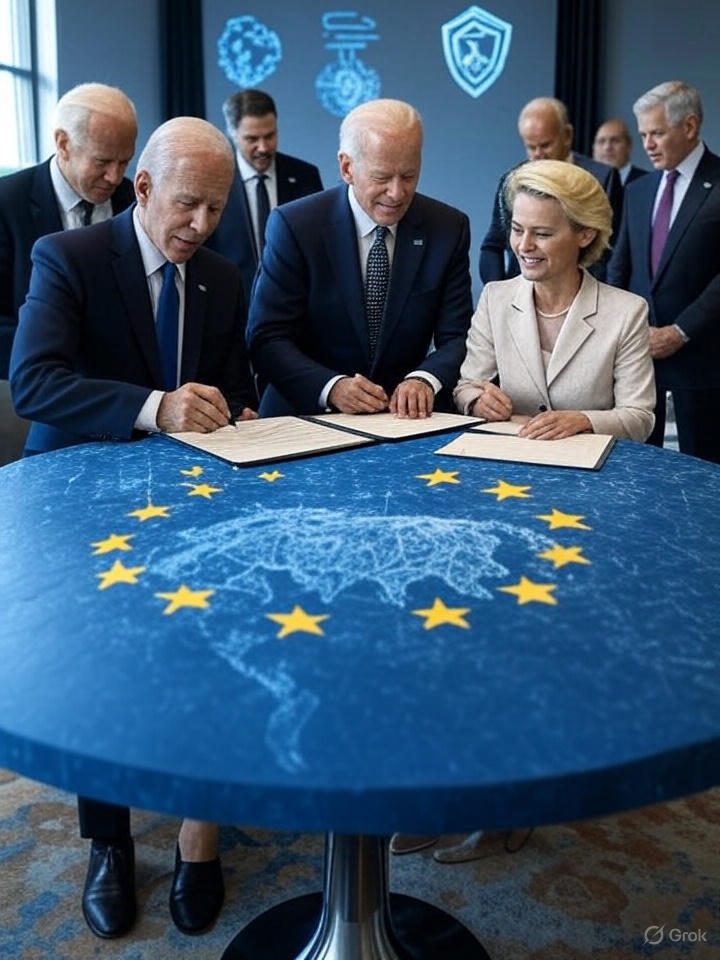A Breakthrough Moment in AI Governance
Europe and the United States are edging toward a landmark transatlantic agreement on AI safety standards, aiming to unite regulation and innovation. At its core is a legally binding treaty, the Framework Convention on Artificial Intelligence, Human Rights, Democracy and the Rule of Law, which both sides signed in September 2024, alongside the UK and other countries (The Verge).
This Framework Convention establishes shared legal principles for AI systems, focusing on transparency, protection of user rights, democratic integrity, and accountability. It lays a common baseline for AI regulation across signatory states, encouraging regulatory alignment while respecting national law(Globedge).
Bridging Divergent Approaches
The EU and U.S. have historically diverged in their approaches:
- The EU AI Act, effective August 1, 2024, categorises AI systems by risk unacceptable, high, limited, and minimal and imposes strict rules on transparency, assessments, and enforcement for high-risk and general purpose AI (King & Spalding, Wikipedia).
- The U.S. model, by contrast, remains patchwork: enforcement happens through existing federal and state statutes, guided by sector specific bodies like the FTC, and state-level laws on deepfakes and bias audits (King & Spalding).
Despite these differences, both sides share core objectives: mitigating bias, ensuring transparency, establishing accountability across the AI lifecycle, and protecting civil rights (Kennedys Law).
Emerging Transatlantic Collaboration
As the treaty matures, cooperation is evolving in several key areas:
- Harmonised Safety Testing: The U.S. AI Safety Institute (part of NIST) and EU safety bodies are aligning testing methods and exchanging information with major AI labs like OpenAI and Anthropic on best practices for risk evaluation and mitigation (ansi.org).
- Regulatory Sandboxes: The treaty endorses controlled innovation environments, echoing EU’s mandated sandboxes and U.S. innovation hubs for safe AI experimentation (Cleary AI and Technology Insights).
- Standard Setting: Through joint working groups, the U.S. and EU aim to develop unified standards for AI oversight blending the EU’s risk based regulation with America’s flexible, market-driven innovation goals.

Why It Matters
Global Consistency
Once ratified, the Framework Convention will establish binding international norms that can influence non signatory states and private sector behavior, reinforcing the EU AI Act’s global reach what’s often called the “Brussels Effect.” This encourages multinational AI developers to design systems compliant with the highest standards from the outset (News From The States).
Balancing Safety & Innovation
The U.S. emphasis on flexibility exemplified by pushback at the Paris AI Summit from officials like Vice President JD Vance, who warned against overly burdensome rules reflects concern that strict regulation could dampen innovation (AP News). The agreement aims to preserve that spirit while adopting rigorous protections.
Accountability & Enforcement
The EU enforces compliance through its European AI Board, market surveillance authorities, and hefty fines (up to €35 M or 7% of global turnover). The U.S. lacks a central AI regulator but uses existing agencies like the FTC and DOJ and state level legislation to hold companies accountable. The treaty offers a framework to harmonise enforcement expectations (King & Spalding).
Looking Ahead: Implementation & Impact
- Ratification Phase: The treaty will come into force only after ratification by at least five signatory states. Once active, mechanisms for coordination, reporting, and dispute resolution will kick in.
- Complementing Domestic Law: In the EU, the Convention reinforces obligations already in the EU AI Act. In the U.S., it may spur federal AI legislation and strengthen coordination across states and agencies (Cleary AI and Technology Insights, Wikipedia, Wikipedia).
- Private Sector Sign On: Companies may be encouraged or required to adopt voluntary codes of conduct in line with treaty obligations, bridging gaps where formal regulation may lag (ecipe.org, arXiv).
Summary
- The EU and U.S. have joined or are imminently set to join a binding Framework Convention on AI safety, aligning transatlantic policy on human rights, transparency, and innovation.
- While the EU AI Act enforces a robust risk based system, U.S. regulation relies on existing frameworks and a light touch approach.
- The emerging agreement works to blend best practices from both sides setting legal standards that guard against misuse while preserving space for innovation.
- Together, these efforts signal a new era in global AI governance one where democratic values, civil protections, and cutting edge technology must rise in tandem.

